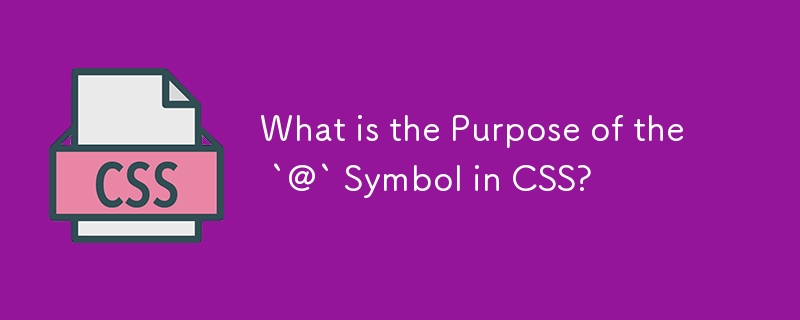

@ Symbol in CSS: Unveiling Its Purpose
Question:
Encountering an unfamiliar notation in CSS, developers are perplexed by the usage of the @ symbol, particularly in @font-face declarations. Is this a recent addition to CSS3 or a long-overlooked feature analogous to IDs and classes?
Answer:
The @ symbol has been an integral part of CSS since its inception with @import in CSS1. However, its prevalence has grown with the emergence of @media and @font-face in CSS2 and CSS3, respectively. These constructs are known as at-rules in CSS.
At-rules are special instructions for the browser that extend beyond styling HTML elements. They play a crucial role in controlling how styles are applied and cater to specific tasks.
Examples of At-Rules:
@import: Imports another stylesheet from within a stylesheet.
@media: Applies styles selectively based on media characteristics (e.g., print, mobile devices).
@font-face: Defines custom fonts for use in designs, enabling browser downloads of fonts and text rendering in customized ways.
Distinct Features of At-Rules:
Unlike selectors, at-rules have no relationship with elements. Their diverse nature has led to varying definitions across multiple CSS modules. Examples of other at-rules include:
Conclusion:
The @ symbol in CSS signifies at-rules, special instructions that guide the browser's behavior beyond styling. They perform tasks such as importing stylesheets, controlling media-specific styling, and defining custom fonts. At-rules are a vital aspect of CSS, expanding its capabilities and allowing for greater flexibility in website design.
The above is the detailed content of What is the Purpose of the `@` Symbol in CSS?. For more information, please follow other related articles on the PHP Chinese website!




